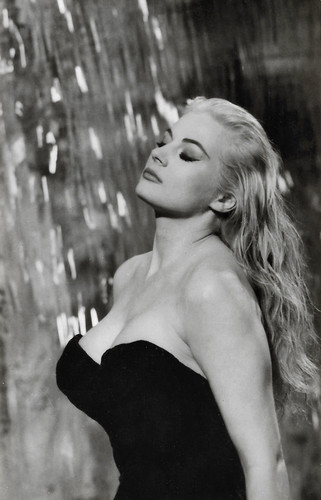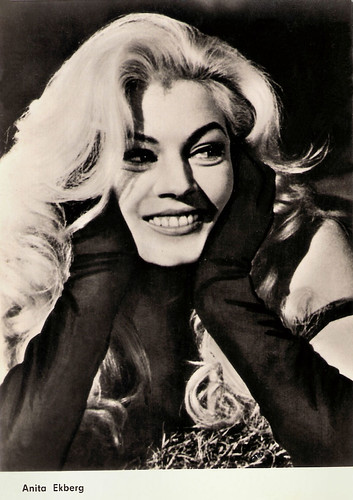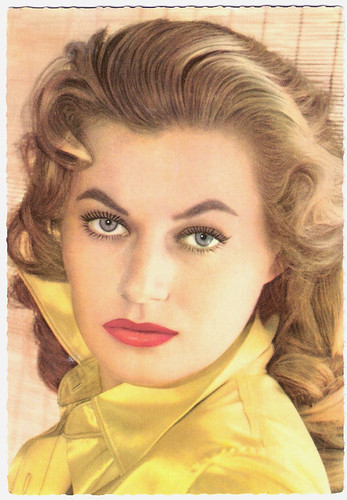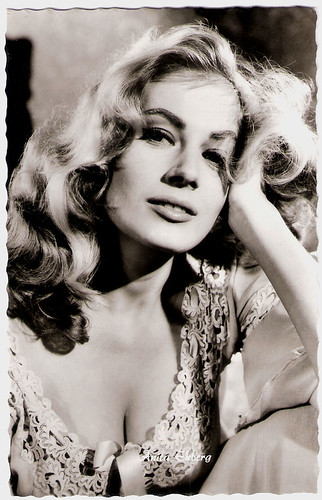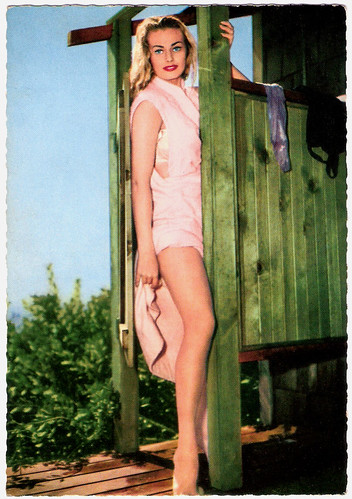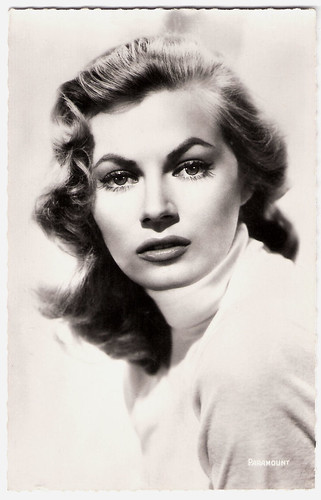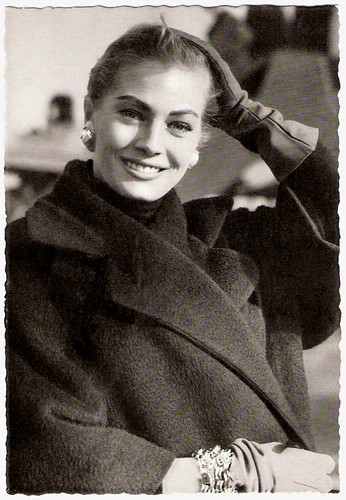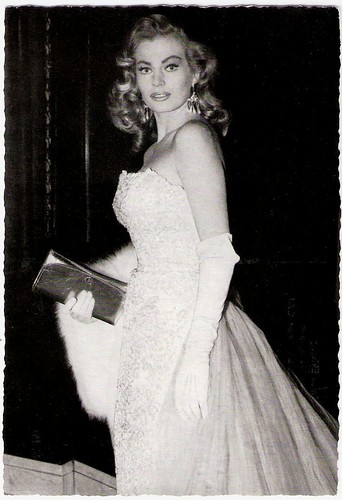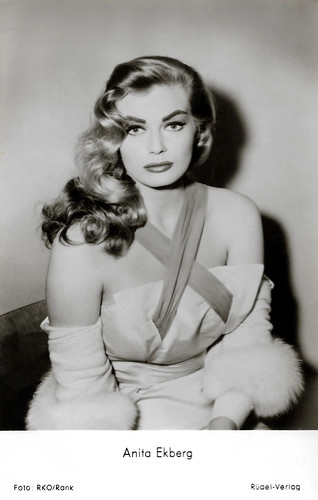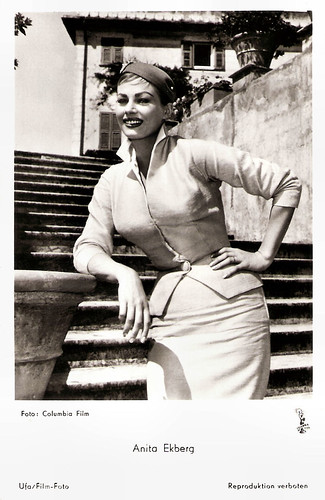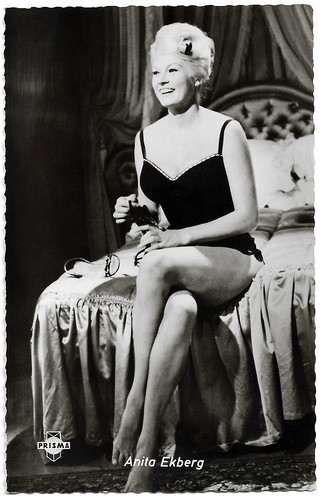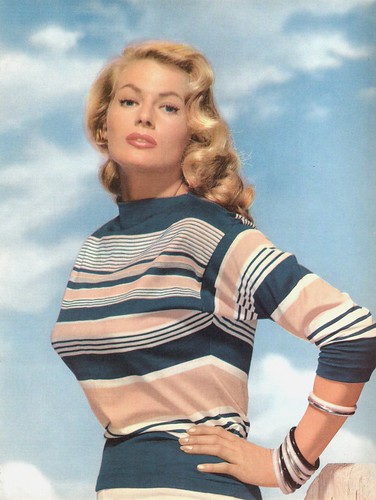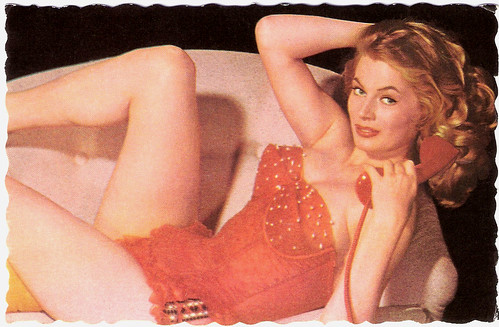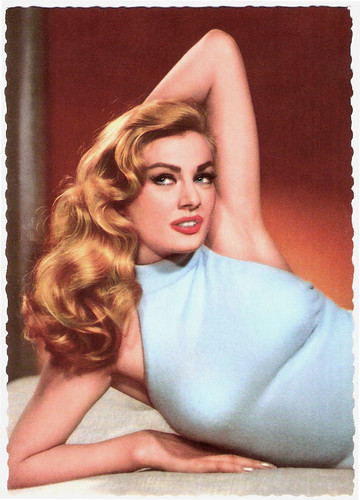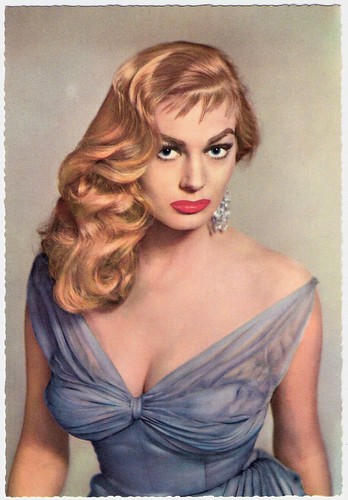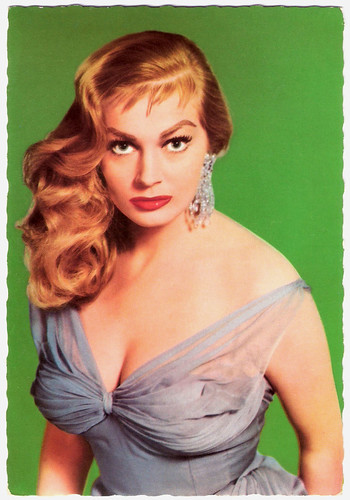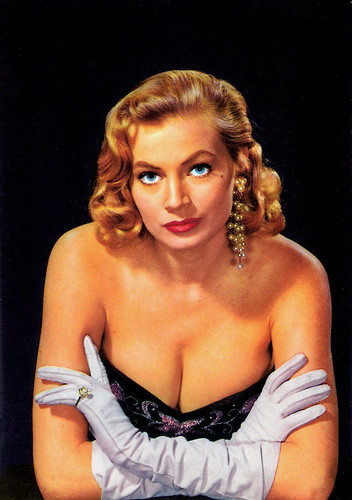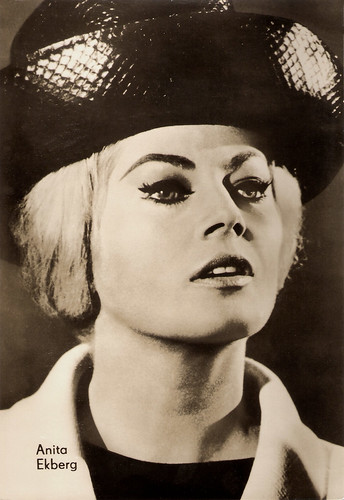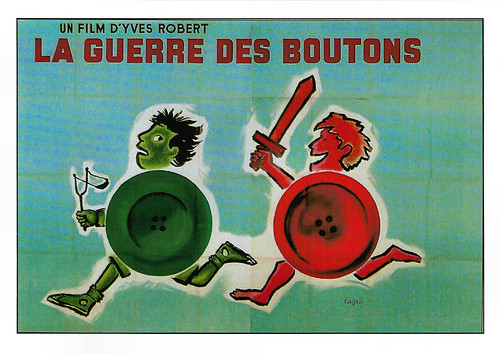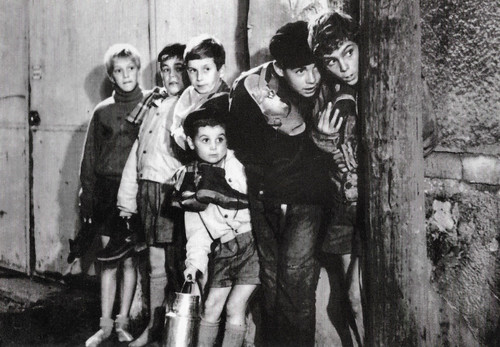On 24 April 2024, cool and beautiful Margaret Lee (1943) passed away. She posed as a glamorous starlet for many international magazines throughout the 1960s. Between 1962 and 1983 the British born actress co-starred in over 70 European films. She was 80.
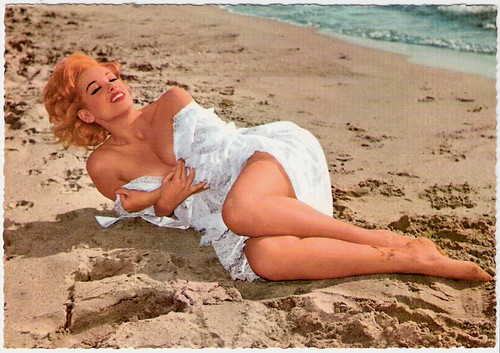
German postcard by Krüger, no. 902/361. Photo: Georg Michalke.
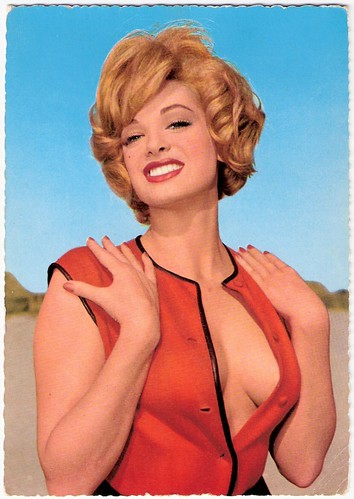
German postcard by Kruger, no. 902/356. Photo: Georg Michalke.
Margaret (sometimes credited as Margareth) Lee was born Margaret Gwendolyn Box in Wolverhampton, England in 1943. Her mother, who lived in wartime London, was evacuated because of the bombing to a family in Wolverhampton in the West Midlands, whom she had never met before. After the bombing ended mother and daughter returned to London, and Margaret grew up there. She was educated at Roan Grammar School in Greenwich and later studied for three years at the Italia Conti Theatre School in London.
Margaret Lee in an interview with the blog Du dumme Sau!: "I wanted to act in the Theatre (never thought of films) and was willing to take any path that might lead me there. I read in The Stage of auditions for showgirls at the famous Moulin Rouge in Paris. I was 17. I wanted to get away from home, and so I auditioned and was taken on. Then almost a year later, a friend told me they were interviewing for small parts in Cleopatra with Elizabeth Taylor in Rome. I auditioned and was accepted. Within two weeks I was in Rome and going to Cinecitta Film Studios each day. In the end, however, many hours of the film were cut, including my appearances."
At the set of Cleopatra (Joseph L. Mankiewicz, 1963), she met Gino Malerba, who worked as an assistant to choreographer Hermes Pan. When the filming of Cleopatra ended he introduced her to an agent, Fillipo Fortini. They both hoped in this way Lee could get work as an actress in Rome and not have to return to London. It worked and Malerba and Lee would later marry.
She made her screen debut in Maciste contro i mostri/Fire Monsters Against the Son of Hercules (Guido Malatesta, 1962) opposite bodybuilder Reg Lewis. With a blonde, fluffy look modelled after Marilyn Monroe, Lee followed it up with a stream of low-budget Peplum spectacles, comedies and thrillers. Some of them are now considered cult films.
Highlights include Gli Imbroglioni/The Swindlers (Lucio Fulci, 1963) with Walter Chiari, the comedy In ginocchio da te/On My Knees For You (Ettore Maria Fizzarotti, 1964) starring singer Gianni Morandi, Questa volta parliamo di uomini/Let's Talk About Men (Lina Wertmüller, 1965) with Nino Manfredi, and Casanova '70 (Mario Monicelli, 1965) with Marcello Mastroianni. She appeared in several comedies and parodies which starred the popular comedic duo Franco Franchi and Ciccio Ingrassia. Few of these films received much (if any) distribution in foreign territories, but they were highly successful in Italy and made Lee a well-known film actress there.
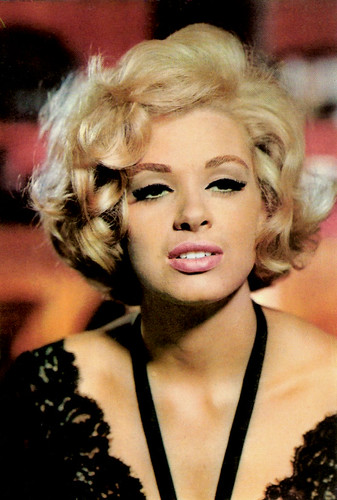
Israelian postcard by Éditions de Luxe, no. 123.

Italian collectors card by La Rotografica Romana. Edito dalla Nat Nuova Alta Tensione.
Around the mid-1960s, Margaret Lee started to appear in a long line of Eurospy films, where she was frequently cast as the sexy femme fatale. Her appearance changed as she dropped the blonde look and became a brunette instead.
These Eurospy films include Le Tigre se parfume à la dynamite/An Orchid for the Tiger (Claude Chabrol, 1965), Agente 077 dall'oriente con furore/Agent 077 From the Orient with Fury (Sergio Grieco, 1965), Se tutte le donne del mondo/Kiss the Girls and Make Them Die (Henry Levin, 1966) with American TV star Mike Connors, and the French James Bond variation Coplan sauve sa peau/Coplan Saves His Skin (Yves Boisset, 1968) opposite Claudio Brook and Jean Servais.
Lee was also popular on Italian television in the 1960s. She appeared as a showgirl alongside the famous singer Johnny Dorelli. Lee also starred with Dorelli in his film debut Arriva Dorellik/How to Kill 400 Duponts (Steno, 1967).
She was also seen in sexy parts opposite Jean Gabin and Robert Stack in Le soleil des voyous/Action Man (Jean Delannoy, 1967), and with Gian Maria Volonté in Banditi a Milano/The Violent Four (Carlo Lizzani, 1968).
Lee spoke both English and Italian fluently, and from 1966 on she dubbed most of her own films.

German postcard by Kruger, no. 902/170.
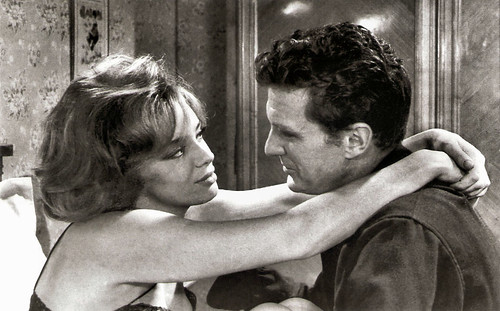
Romanian postcard by Casa Filmului Acin. Publicity still for Le soleil des voyous/Action Man (Jean Delannoy, 1967) with Robert Stack.
Margaret Lee caught the eye of international film producer Harry Alan Towers. He gave her wider international recognition by casting her in prominent roles in several of his all-star-cast productions.The first was the British Edgar Wallace mystery Circus of Fear (John Llewellyn Moxey, 1966) starring Christopher Lee. Towers also cast her in the spy-comedy Our Man in Marrakesh (Don Sharp, 1966), the action film Five Golden Dragons (Jeremy Summers, 1967), the thrillers Paroxismus/Venus in Furs (1969) and Il trono di fuoco/The Bloody Judge (1970), both directed by Jesús Franco.
Finally, Lee starred in the Oscar Wilde adaptation Dorian Gray (Massimo Dallamano, 1970) starring Helmut Berger. Lee's co-star in Circus of Fear, Five Golden Dragons and Venus in Furs was the renowned German actor Klaus Kinski, who was also a regular in Harry Alan Towers productions. The pairing of Lee and Kinski proved to be very popular among cinema-goers - especially in Italy - so they would appear in a total of 12 films together. Other interesting films in which Margaret Lee appeared were I Bastardi/Sons of Satan (Duccio Tessari, 1969) - one of the last films of Rita Hayworth, and the Giallo (Italian thriller) Gli assassini sono nostri ospiti/The Killers Are Our Guests (Vincenzo Rigo, 1974) starring Anthony Steffen.
However, with the death of the Spy genre in the late 1960s, Margaret Lee was then often cast in popular Euro-horror flicks. Wikipedia notes: "By the early 1970s, Lee's movie career had descended further and further into exploitation; culminating in Fernando Di Leo's extremely sleazy and violent thriller La bestia uccide a sangue freddo/Slaughter Hotel (1971)."
In 1974 she retired from the film industry and returned to England. In 1982 she came back for two more films, the comedies Sesso e volentieri/Sex As You Like It (Dino Risi, 1982), which reunited her with her old co-star Johnny Dorelli, and Stangata napoletana/Neapolitan Sting (Vittorio Caprioli, 1983) starring Treat Williams. Margaret Lee married in 1963 choreographer/agent Gino Malerba. From this marriage which soon ended in a divorce, she had a son, producer/production manager Roberto Malerba of V for Vendetta (James McTeigue, 2006) and Speed Racer (Andy Wachowski, Lana Wachowski, 2008).
After retiring in England she married again and had another son, production coordinator Damian Anderson of V for Vendetta (James McTeigue, 2006) and Ninja Assassin (James McTeigue, 2009). In 1987, Margaret Lee moved to the Bay Area in California. In 1988 she studied the Stanislavsi 'Method' Acting techniques for a year with Jean Shelton in San Francisco. Later she worked as a stage actress in a small theatre.
Margaret Lee performs an Italo-pop lounge act in the Diabolik parody Arriva Dorellik (1967). Source: Modcinema (YouTube).
Margaret Lee sings the title song in Five Golden Dragons (1967). Source: Filmfan3 (YouTube).
Sources: Les gens du cinema (French), Du dumme Sau – a Kinski Blog, Brian J. Walker (Brian's Drive-in Theater), Sandra Brennan (Allmovie), Wikipedia and IMDb.

German postcard by Krüger, no. 902/361. Photo: Georg Michalke.

German postcard by Kruger, no. 902/356. Photo: Georg Michalke.
Blonde, fluffy look
Margaret (sometimes credited as Margareth) Lee was born Margaret Gwendolyn Box in Wolverhampton, England in 1943. Her mother, who lived in wartime London, was evacuated because of the bombing to a family in Wolverhampton in the West Midlands, whom she had never met before. After the bombing ended mother and daughter returned to London, and Margaret grew up there. She was educated at Roan Grammar School in Greenwich and later studied for three years at the Italia Conti Theatre School in London.
Margaret Lee in an interview with the blog Du dumme Sau!: "I wanted to act in the Theatre (never thought of films) and was willing to take any path that might lead me there. I read in The Stage of auditions for showgirls at the famous Moulin Rouge in Paris. I was 17. I wanted to get away from home, and so I auditioned and was taken on. Then almost a year later, a friend told me they were interviewing for small parts in Cleopatra with Elizabeth Taylor in Rome. I auditioned and was accepted. Within two weeks I was in Rome and going to Cinecitta Film Studios each day. In the end, however, many hours of the film were cut, including my appearances."
At the set of Cleopatra (Joseph L. Mankiewicz, 1963), she met Gino Malerba, who worked as an assistant to choreographer Hermes Pan. When the filming of Cleopatra ended he introduced her to an agent, Fillipo Fortini. They both hoped in this way Lee could get work as an actress in Rome and not have to return to London. It worked and Malerba and Lee would later marry.
She made her screen debut in Maciste contro i mostri/Fire Monsters Against the Son of Hercules (Guido Malatesta, 1962) opposite bodybuilder Reg Lewis. With a blonde, fluffy look modelled after Marilyn Monroe, Lee followed it up with a stream of low-budget Peplum spectacles, comedies and thrillers. Some of them are now considered cult films.
Highlights include Gli Imbroglioni/The Swindlers (Lucio Fulci, 1963) with Walter Chiari, the comedy In ginocchio da te/On My Knees For You (Ettore Maria Fizzarotti, 1964) starring singer Gianni Morandi, Questa volta parliamo di uomini/Let's Talk About Men (Lina Wertmüller, 1965) with Nino Manfredi, and Casanova '70 (Mario Monicelli, 1965) with Marcello Mastroianni. She appeared in several comedies and parodies which starred the popular comedic duo Franco Franchi and Ciccio Ingrassia. Few of these films received much (if any) distribution in foreign territories, but they were highly successful in Italy and made Lee a well-known film actress there.

Israelian postcard by Éditions de Luxe, no. 123.

Italian collectors card by La Rotografica Romana. Edito dalla Nat Nuova Alta Tensione.
Sexy femme fatales
Around the mid-1960s, Margaret Lee started to appear in a long line of Eurospy films, where she was frequently cast as the sexy femme fatale. Her appearance changed as she dropped the blonde look and became a brunette instead.
These Eurospy films include Le Tigre se parfume à la dynamite/An Orchid for the Tiger (Claude Chabrol, 1965), Agente 077 dall'oriente con furore/Agent 077 From the Orient with Fury (Sergio Grieco, 1965), Se tutte le donne del mondo/Kiss the Girls and Make Them Die (Henry Levin, 1966) with American TV star Mike Connors, and the French James Bond variation Coplan sauve sa peau/Coplan Saves His Skin (Yves Boisset, 1968) opposite Claudio Brook and Jean Servais.
Lee was also popular on Italian television in the 1960s. She appeared as a showgirl alongside the famous singer Johnny Dorelli. Lee also starred with Dorelli in his film debut Arriva Dorellik/How to Kill 400 Duponts (Steno, 1967).
She was also seen in sexy parts opposite Jean Gabin and Robert Stack in Le soleil des voyous/Action Man (Jean Delannoy, 1967), and with Gian Maria Volonté in Banditi a Milano/The Violent Four (Carlo Lizzani, 1968).
Lee spoke both English and Italian fluently, and from 1966 on she dubbed most of her own films.

German postcard by Kruger, no. 902/170.

Romanian postcard by Casa Filmului Acin. Publicity still for Le soleil des voyous/Action Man (Jean Delannoy, 1967) with Robert Stack.
Giallo
Margaret Lee caught the eye of international film producer Harry Alan Towers. He gave her wider international recognition by casting her in prominent roles in several of his all-star-cast productions.The first was the British Edgar Wallace mystery Circus of Fear (John Llewellyn Moxey, 1966) starring Christopher Lee. Towers also cast her in the spy-comedy Our Man in Marrakesh (Don Sharp, 1966), the action film Five Golden Dragons (Jeremy Summers, 1967), the thrillers Paroxismus/Venus in Furs (1969) and Il trono di fuoco/The Bloody Judge (1970), both directed by Jesús Franco.
Finally, Lee starred in the Oscar Wilde adaptation Dorian Gray (Massimo Dallamano, 1970) starring Helmut Berger. Lee's co-star in Circus of Fear, Five Golden Dragons and Venus in Furs was the renowned German actor Klaus Kinski, who was also a regular in Harry Alan Towers productions. The pairing of Lee and Kinski proved to be very popular among cinema-goers - especially in Italy - so they would appear in a total of 12 films together. Other interesting films in which Margaret Lee appeared were I Bastardi/Sons of Satan (Duccio Tessari, 1969) - one of the last films of Rita Hayworth, and the Giallo (Italian thriller) Gli assassini sono nostri ospiti/The Killers Are Our Guests (Vincenzo Rigo, 1974) starring Anthony Steffen.
However, with the death of the Spy genre in the late 1960s, Margaret Lee was then often cast in popular Euro-horror flicks. Wikipedia notes: "By the early 1970s, Lee's movie career had descended further and further into exploitation; culminating in Fernando Di Leo's extremely sleazy and violent thriller La bestia uccide a sangue freddo/Slaughter Hotel (1971)."
In 1974 she retired from the film industry and returned to England. In 1982 she came back for two more films, the comedies Sesso e volentieri/Sex As You Like It (Dino Risi, 1982), which reunited her with her old co-star Johnny Dorelli, and Stangata napoletana/Neapolitan Sting (Vittorio Caprioli, 1983) starring Treat Williams. Margaret Lee married in 1963 choreographer/agent Gino Malerba. From this marriage which soon ended in a divorce, she had a son, producer/production manager Roberto Malerba of V for Vendetta (James McTeigue, 2006) and Speed Racer (Andy Wachowski, Lana Wachowski, 2008).
After retiring in England she married again and had another son, production coordinator Damian Anderson of V for Vendetta (James McTeigue, 2006) and Ninja Assassin (James McTeigue, 2009). In 1987, Margaret Lee moved to the Bay Area in California. In 1988 she studied the Stanislavsi 'Method' Acting techniques for a year with Jean Shelton in San Francisco. Later she worked as a stage actress in a small theatre.
Margaret Lee performs an Italo-pop lounge act in the Diabolik parody Arriva Dorellik (1967). Source: Modcinema (YouTube).
Margaret Lee sings the title song in Five Golden Dragons (1967). Source: Filmfan3 (YouTube).
Sources: Les gens du cinema (French), Du dumme Sau – a Kinski Blog, Brian J. Walker (Brian's Drive-in Theater), Sandra Brennan (Allmovie), Wikipedia and IMDb.
